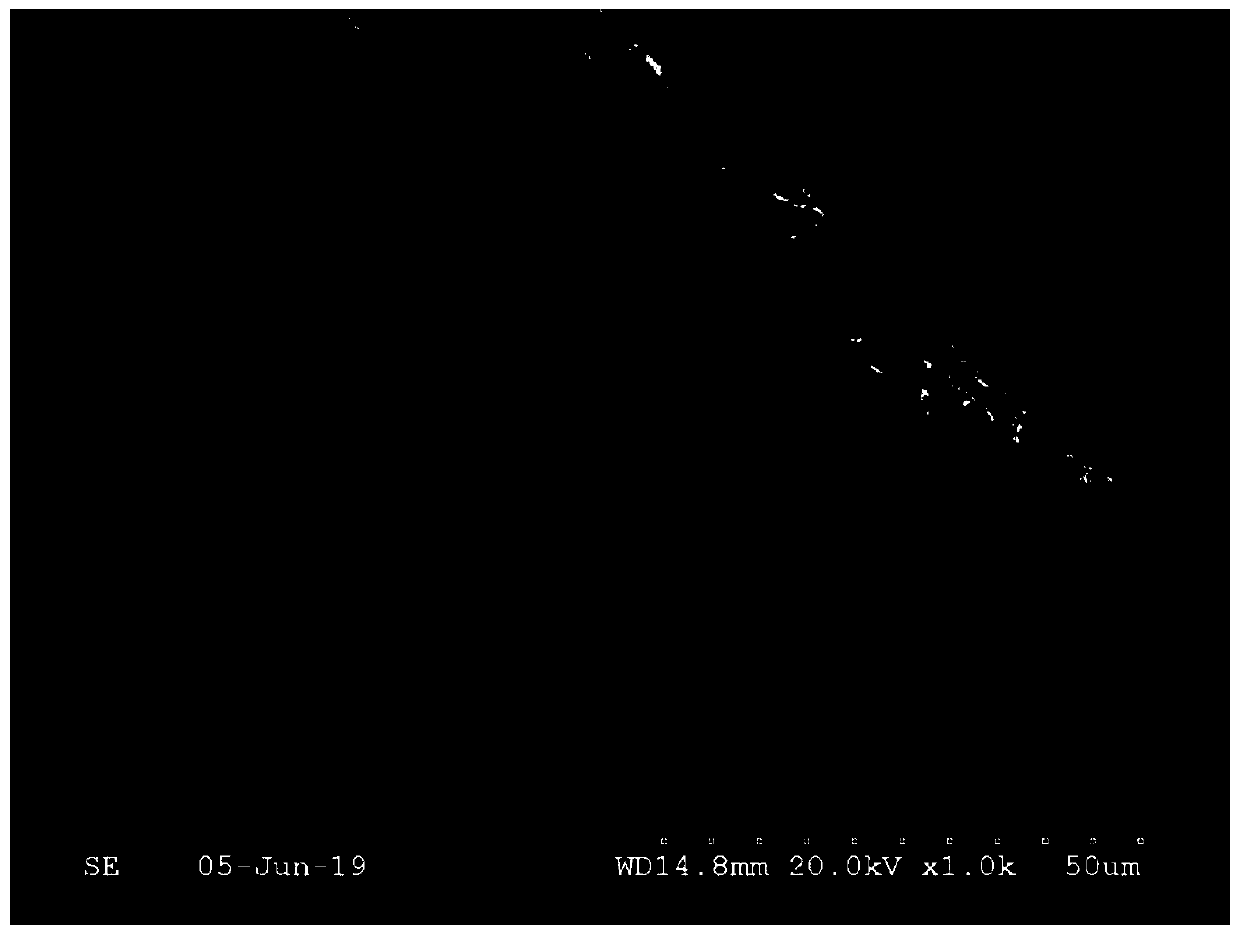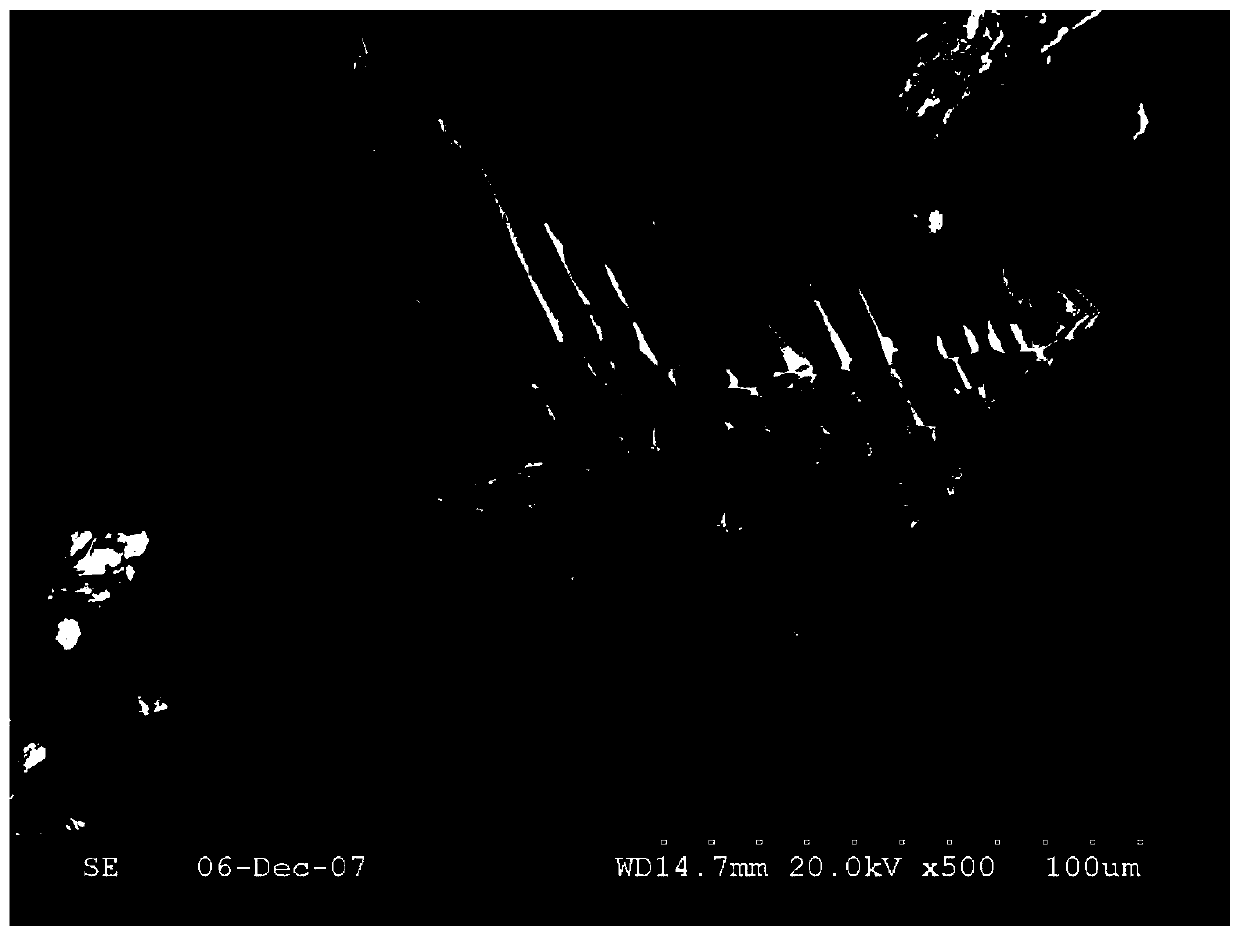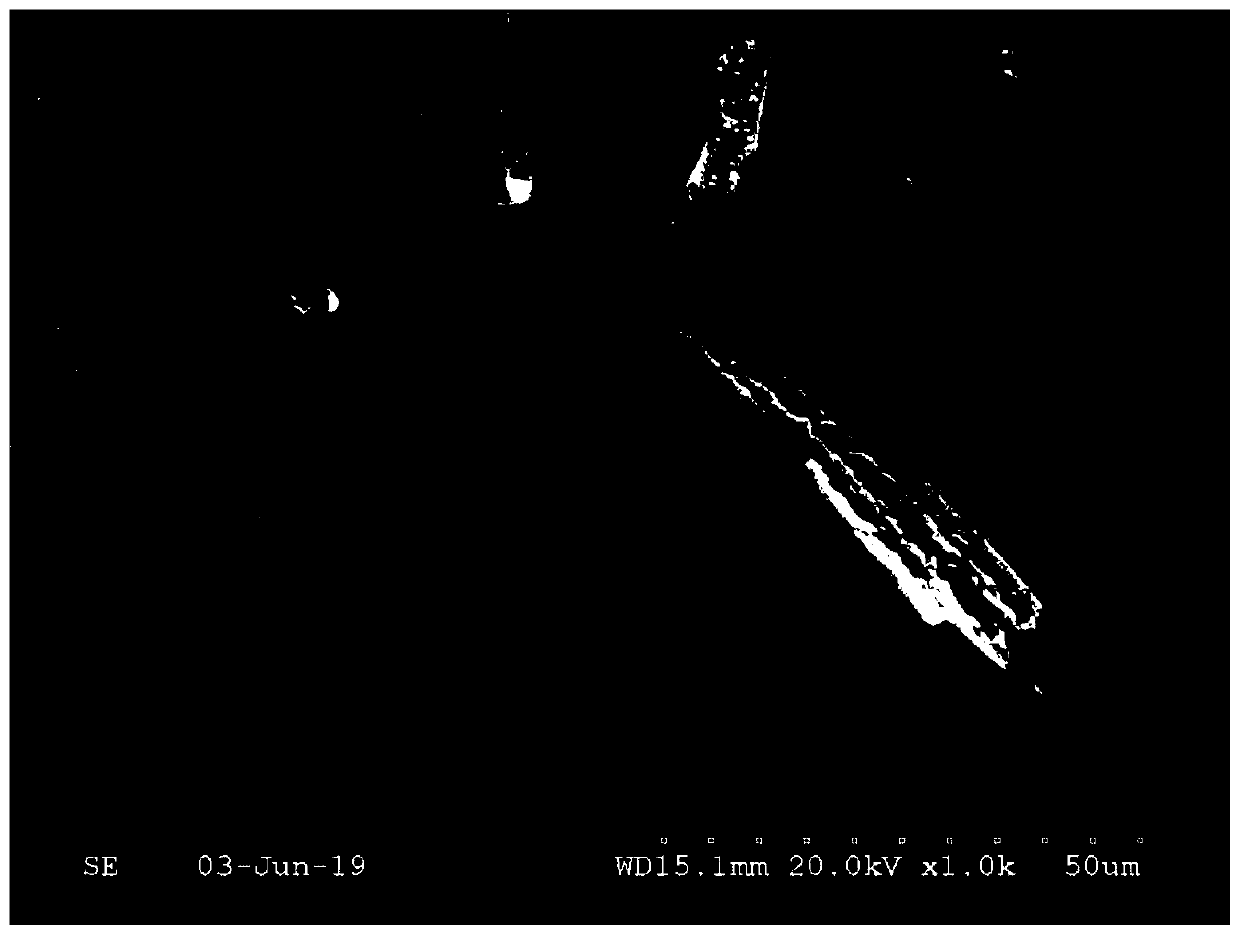Composite material for efficiently removing phosphorus in wastewater, and preparation method and application of composite material
A composite material and wastewater technology, applied in soil conditioning materials, chemical instruments and methods, applications, etc., can solve the problems of limited adsorption performance and low adsorption efficiency of pollutants, and achieve the goal of promoting sustainable development and realizing multi-stage recycling Effect
- Summary
- Abstract
- Description
- Claims
- Application Information
AI Technical Summary
Problems solved by technology
Method used
Image
Examples
Embodiment 1
[0026] A method for preparing a composite material that efficiently removes phosphorus in wastewater, collecting shellfish waste and wheat straw from the seafood market, mixing them and crushing them until the particle size is less than 5 cm, placing them in a pyrolysis device and feeding nitrogen to heat under anaerobic conditions After reaching the set temperature and keeping it for 1 hour, cool down. During the cooling process, nitrogen gas is continuously introduced. After the temperature reaches room temperature, the pyrolysis products are taken out, and the organic carbon, calcium content and specific surface area of each pyrolysis carbon product are measured to analyze the composition of different raw materials. Compare the effect of pyrolysis temperature on the properties of carbonaceous products. Raw material proportioning and cracking temperature of the raw material that embodiment adopts are as shown in table 1:
[0027] Table 1 Different raw materials and pyrolys...
Embodiment 2
[0036] The mixed carbonaceous material obtained in Example 1 was crushed again until the particle size was less than 5 mm, and 10 g was weighed and added to 1.5 L of phosphorus-containing water. After shaking at room temperature for 2 hours, the supernatant was separated by sedimentation, and the adsorbed and fixed phosphate was collected. The carbonaceous sediment was used to verify the adsorption effect of pyrolytic carbon on phosphorus in water. The results are shown in Table 3:
[0037] Table 3 Adsorption and removal effects of pyrolysis carbon materials on phosphorus in different concentrations of phosphorus solutions
[0038]
[0039]
[0040] The results in Table 3 are consistent with the predictions in Example 1, and the phosphorus concentration in phosphorus-containing wastewater using pyrolytic carbon 2 is less than 1600 mg -l The removal rate of phosphorus in water can reach more than 98%, and the maximum adsorption capacity of phosphorus can reach 190 mg g -...
Embodiment 3
[0042] Collect pyrolytic carbon 2, reference carbon 2 and reference carbon 4 in Example 2 that have absorbed phosphate, dry them at 60°C until the moisture content is less than 50%, grind and disperse, weigh 1 gram according to dry weight conversion and add to 200 g contains cadmium (21 mg kg -1 ), lead (817mg kg -1 ), copper (453 mg kg -1 ) and zinc (364 mg kg -1 ) in the heavy metal-contaminated soil, add water after mixing well and control the soil moisture content to 50%, after 2 weeks of cultivation, measure the soil CaCl 2 Extracted heavy metal content to analyze its passivation effect on soil heavy metal ions, the results are shown in Table 4:
[0043] Wherein, soil sample 1 is untreated soil;
[0044] Soil sample 2: soil with pyrolysis carbon 2 after adding 1% adsorbed phosphorus;
[0045] Soil sample 3: the soil of control carbon 2 after adding 1% adsorbed phosphorus;
[0046] Soil sample 4: the soil of control carbon 4 after adding 1% adsorbed phosphorus.
[0...
PUM
| Property | Measurement | Unit |
|---|---|---|
| Maximum adsorption capacity | aaaaa | aaaaa |
Abstract
Description
Claims
Application Information
 Login to View More
Login to View More - R&D
- Intellectual Property
- Life Sciences
- Materials
- Tech Scout
- Unparalleled Data Quality
- Higher Quality Content
- 60% Fewer Hallucinations
Browse by: Latest US Patents, China's latest patents, Technical Efficacy Thesaurus, Application Domain, Technology Topic, Popular Technical Reports.
© 2025 PatSnap. All rights reserved.Legal|Privacy policy|Modern Slavery Act Transparency Statement|Sitemap|About US| Contact US: help@patsnap.com



